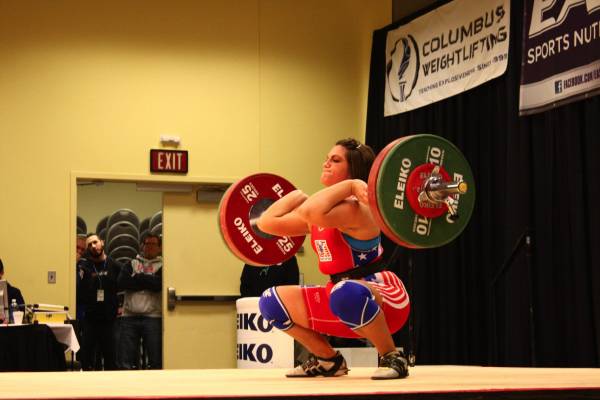The back squat, or simply the squat, has the greatest carryover value of any exercise to the Olympic lifts, short of the actual lifts themselves. It is simply not possible to develop a weightlifter to his or her full potential without performing thousands of repetitions of heavy back squats. It is not only an obviously great strengthener of the legs and hips, but also of the torso musculature, and furthermore stimulates the anabolism of the musculature.
Now before I proceed further, let me answer the obvious question of many – low bar or high bar. I am discussing the high bar squat as it is performed by weightlifters all over the planet. The low bar squat is an event, and as an exercise it has great benefit at improving results in the low bar squat. For weightlifters there are many more useful ways of directing energy than performing low bar squats.
Previously I wrote about the snatch to clean and jerk ratio, but today I’m going to discuss the squat to clean and jerk ratio. In the 1950s and 1960s there were frequent incidents of elite level weightlifters being forced to withdraw from competitions because of knee injuries. These types of situations have abated greatly and in today’s world level competition their occurrence is extremely rare. The reason for that, I believe, is the increase in the squat to clean and jerk ratio along with better selection of athletes.
In the late 1970s the Soviets gathered data and found that their best lifters had best back squats that averaged 131% of their best cleans and jerk. As time passed there was anecdotal evidence that many of the top lifters in the world had even higher figures.
As a coach I’ve used this 131% in calculating the target squatting figure for my athletes. For instance, if I am planning on having a lifter target a clean and jerk goal of 120 kg for the next cycle, I will plan all the training percentages for the back squat off of 157 kg or more, which is 131% of 120. This seems to provide the proper amount of loading on the individual, and enables to athlete to stand easily with whatever weight is cleaned.
Naturally there are variations among individuals, and since I work with Americans and we have no infrastructure for talent selection, the variations are even greater. Once my athletes have mastered technique, and their bodies have been balanced through training, we can plan on targeting back squatting weights at that 131% figure. This can be difficult for those with especially long femurs and who are lifting at a less than optimal bodyweight. Others have excellent squatting leverages and can routinely exceed that target weight. These adjustments in training weight have to be made when planning the training.
 Since I’ve been developing weightlifters by teaching technique, balancing their bodies, and then prescribing appropriate squatting poundage, I have seen very few knee problems and no injuries. The strength levels have been appropriate as evidenced by the proper ratio of snatch to clean and jerk weights.
Since I’ve been developing weightlifters by teaching technique, balancing their bodies, and then prescribing appropriate squatting poundage, I have seen very few knee problems and no injuries. The strength levels have been appropriate as evidenced by the proper ratio of snatch to clean and jerk weights.
So how often do I have my lifters squat? For my veteran lifters, I program squatting five to six days per week during preparation cycles, with one of them being front squats. For very advanced lifters they may even squat twice in the same day. During pre-competition cycles, the back squats are done once or twice per week and front squats once or twice per week, depending on the individual’s needs. 80% at a minimum is programmed for each session.
Front squat intensities are calculated at 105% of the clean and jerk. Personally I prefer them to be higher. This will insure that the recovery from the deep squat in the clean is relatively easy and there is enough leg strength left for a successful jerk drive.
This piece is being presented to assist coaches in understanding the interrelationship between back squatting, front squatting, and cleaning so that training can be designed in a manner that most effectively uses the energies available to the athlete.






